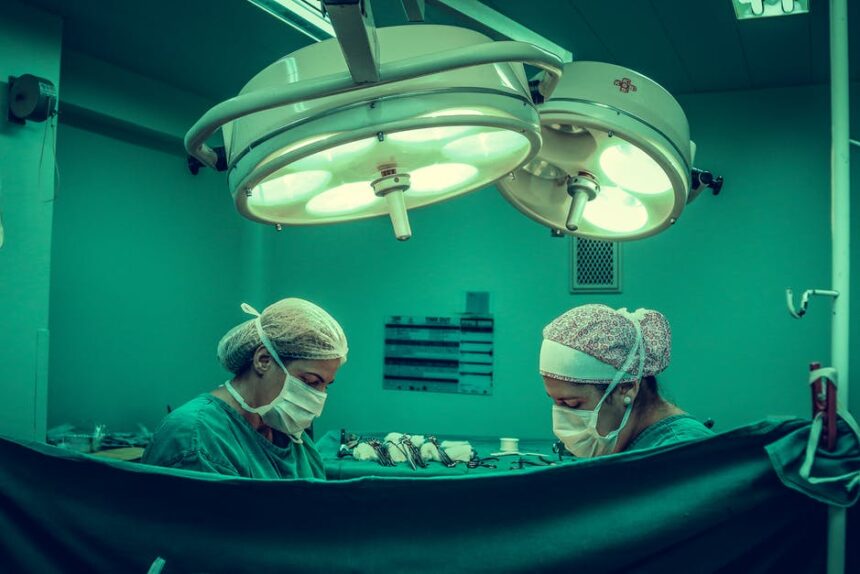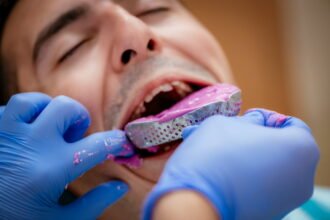For decades, women and men have searched for ways to improve their appearance. Societal norms are often to blame, but the need for improvement also arises from oneself, which isn’t a bad thing. Men or women can find themselves wanting or needing cosmetic procedures to provide a helping hand in obtaining their aesthetic goals. In 2019, the technology is there to help you achieve success, with so many procedures evolving from their conception into quick, almost-no-downtime treatments. Before going for one of these treatments, though, perhaps learning a little about the types of procedures, continuity of care and the origin of the popular surgeries can grant you a wider scope.
Breast Augmentation
Since early 1800, augmentation and plastic surgery procedures have existed. Decade after decade, procedures and methods continue to improve. Many women used bras to lift and support their breasts. Using brassieres and corsairs to uplift the breasts through clothing was popular at the time. Over time, cosmetic surgeons develop procedures to augment breast size and shape. In the 19th century, the first breast enlargement procedure performed. The implants were made from ivory, paraffin, and glass. Later, surgeons found that silicone injections could be successful in performing breast augmentation. In 1895, the first reconstructive breast surgery was performed, and in 1903, the first breast augmentation surgery was performed in the United States.
Origin of Facelift and Rhinoplasty
With time, the cosmetic field has grown as the demand for cosmetic surgery has increased. The early need for cosmetic surgery was to improve the appearance of patients with physical deformities due to industrial accidents and automobile accidents. The knowledge learned from these early procedures led to the first rhinoplasty procedure in the United States. The procedure recognized in 1923. Because of the Eugenic Movement, which was a movement to improve genetic composition in humans, many surgeons engage in new gene techniques and cosmetic techniques as well. As a result of this training, the first facelift was performed in 1931 by a team of surgeons.
Rhinoplasty: The Most Performed Cosmetic Surgery
If you are considering rhinoplasty, which is the reshape or the repair of the nose, there are some things you need to know. Though many people opt for rhinoplasty for cosmetic reasons, such as large or crooked noses, there are medical reasons as well, such as for difficulty breathing or congenital disabilities. Also, there is a preference for it if the nose has been broken. As said by Dr. Anurag Agarwal of the Aesthetic Surgery Center, rhinoplasty is one of the most frequently performed popular facial plastic surgeries in the United States. Surgeons have been performing rhinoplasty surgery since the early 1930s, and according to the American Society of Plastic Surgeon, over 200,000 rhinoplasties were performed in 2017. Technology and the know-how are available to put your mind at ease. Rhinoplasty is used to reduce or increase the size of the nose, correct problems following an injury, correct congenital disabilities, improve or relieve breathing problems. It also can change the shape of the bridge, narrow the shape of the nostrils and change the angle of the nose.
The Rhinoplasty Procedure
Rhinoplasty is performed under general anesthetic or an IV sedation with anesthesia. The procedures generally take one to three hours. Some incisions are made inside the nose, so the scars are not visible. However, it is best to open the nose over the tip when cartilage or grafting bones are indicated. The incision can be made outside the nose across the columella close to the narrowest point. This scar will be hardly visible. Once the surgery is complete, you must wear an external dressing for one week after the surgery to stabilize the reduce any swelling that might occur. If the dressing is inside your nose, it can be removed the following day after the surgery.
Facelift: Confidence in the Making
Unlike rhinoplasty, people opt for a facelift for cosmetic reasons although having a pretty or handsome face can improve self-esteem. Facelifts have become a trend for men and women. Everyone will eventually experience loosening of the skin on the neck and face. The firm jawline is replaced by jowl and excess tissue in the neck. The facelift can correct some of these issues. The process can improve your appearance and self-confidence.
Facelift Procedure
Facelifts are done under local anesthetics and sedatives or general anesthesia and are normally done as an outpatient procedure. An incision is made in near the front of the ear and extends it up into the hair or hairline. The incision can extend behind the ear into the hair-bearing scalp. The skin is removed from facial muscles and fat, and it is gently pull in an upward and posterior direction, and excess skin is removed, and the deeper tissues are tightened. The procedure normally takes two to five hours, and the person can go home after the surgery. The neck lift surgery can occur along with the facelift. With the neck lift, a small incision is made beneath the chin to tighten the skin. Sutures or staples are used to close the incision. If there are excess blood and fluids, a drain may be placed under the skin for one or two days, and then bandages will be applied.
Breast lift: A Trend for Decade to Come
Women breast change over time and several changes contribute to it, such as age, weight fluctuation, and pregnancy. These changes can contribute to a loss of structural support and loss in skin elasticity, which can result in saggy breasts. Although the changes are common, they still can rob a woman of her self-esteem and confidence. Breast Lift, fortunately, is available to relieve the gravity on the chest and reverse the negative impacts of time on the breasts. Breast Lift is simply the removing of loose skin and excess skin and then reshaping the tissue to enhance breast. The breast lift can be performed alone with great results, but they do not change the volume of the breast. The ideal outcome is when breast lift procedure is combined with adding breast implants, which will restore both the volume and the position of the breasts.
Continuity of Care
As the cosmetic field experienced tremendous growth and demand, the need for a sanctioning body to protect patients and provide a continuity of care. In 1985, several associations and medical boards were formed to sanction to ensure continuity of care for patients. The organization, (AACS) requires continuing education to stay abreast of trends, recent advancements, safety, new procedures, and technology. When a surgeon has board credentials, it can provide assurance to patients that the surgeon is a specialist in the medical field. With all procedures, there are advantages and disadvantages associated with each procedure. It is essential to discuss these pros and cons with a surgeon before making a final decision.









